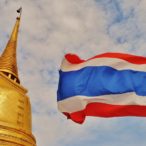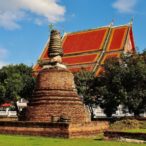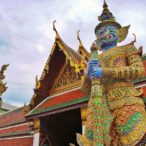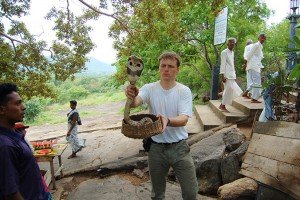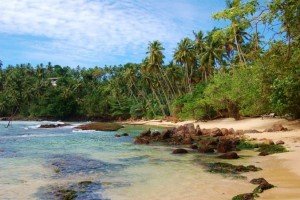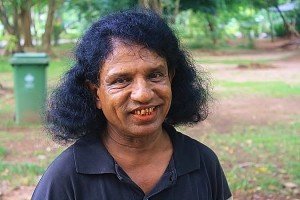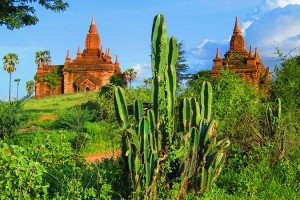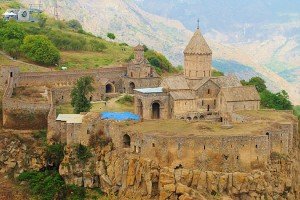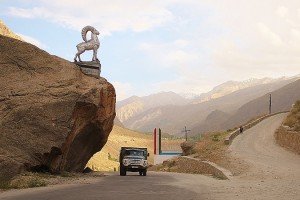Thailand
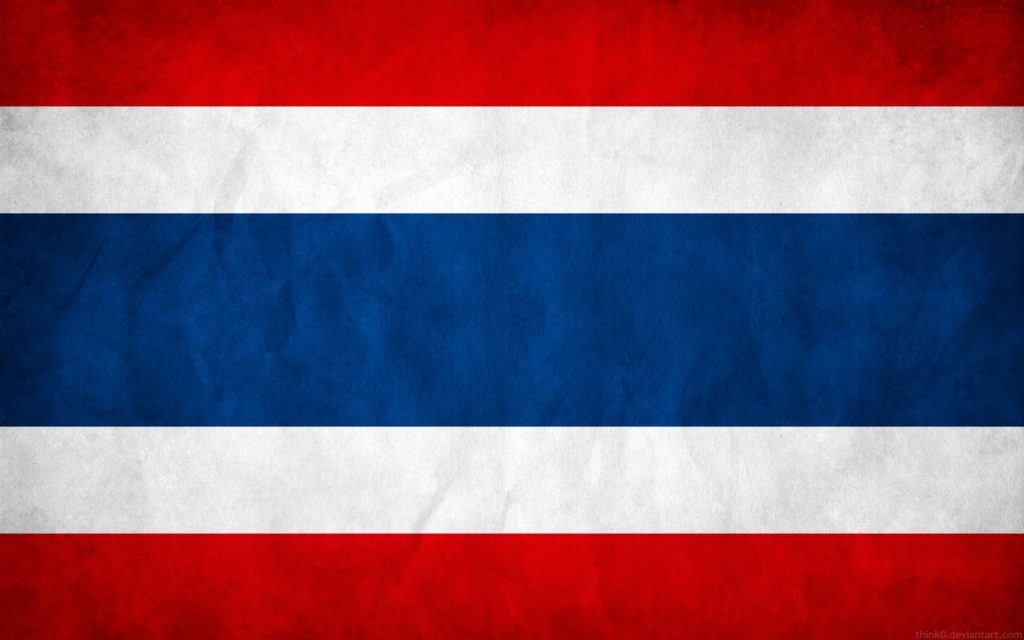
Official name: Kingdom of Thailand
Population: 68 300 000
Area: 513 120 km²

Gallery
Tourist attractions of Thailand, Thailand – the present times, history of Thailand.
Tourist attractions of Thailand
Thailand is one of the most popular and most visited countries of South-East Asia, and its charms are famous around the world. There is a centuries old culture and art, evidenced for example by beautiful and built on a grand scale Buddhist temples, and decorated with great splendor sculptures and ornaments. Thailand is also the world capital of one of the most beautiful beaches in the world, with turquoise water, fairy tale lagoons, coral reefs and coconut trees – and all of that is set in a warm, inviting climate. Thailand is also the home of Thai boxing, Thai massage, and tasty but spicy cuisine. You can explore Thai jungles on an elephants, raft down the the river, and see a lot of beautiful Buddhist temples and monks living in them. Although the country is very commercial, it still retains its traditions and culture, which despite a steady stream of “Whites” gives us a taste of what the true and beautiful Thailand is about. A large part of the national income comes from tourism industry, and unfortunately also from sex industry. Tourism here is very well developed, and sex industry is a part of it (the same as hotel or elephant riding), although prostitution is officially illegal.
About tourist attractions of Thailand I could talk quite long, that`s why I recommend my highly accurate travel journals, where all places of interest are thoroughly listed and described. I’ve been to Thailand many times, and once I spent there whole two months traveling around, what makes me quite confident that I know all the good and bad sides of it. This time however I`m writing only about tourist attractions of Thailand, that`s why I`ll focus only on the good things. To start with the great attraction is Bangkok itself, and its very impressive Buddhist temples, massages, good food, and a wide variety of nightlife. The south of Thailand is a beach paradise. On both sides of the Malay Peninsula there are exotic islands with turquoise waters, colourful fish, palm trees and white sand. This region of Thailand is also the most visited one, because perfect scenery, pure fun, and romantic sunsets in the charms of nature are still the bestsellers. Central Thailand relates primarily to a sad history in Kanchanaburi, but it`s also famous for riding elephants, river Kwai bamboo rafting through the jungle, and the most beautiful waterfalls in the whole of Thailand. Northern Thailand offers beautiful temples in Chiang Mai, trips to the mountains, visits to ethnic minority villages, and the Golden Triangle. Along the way there are a lot of other sights, new tastes, handicrafts, and great art. Another tourist region are the Ancient Cities,which I also highly recommend. I’ve been to all: Ayutthaya, Sukhotai and less known Si Satchanalai. Besides, Thailand is a morally free country, what makes tourists from Europe feel comfortably.
After leaving a tourist zone the realities of Thailand change straight away, but it is still interesting because Thai streets are enriched with splendid, Buddhist temples and fast food markets with Thai food. Taking into account all attractions of Thailand and even its dark sides, to me it is still a beautiful country of fulfilled dreams, where I can afford much more than at home. Even without sightseeing Thailand is a lot of fun itself. I will never forget when I was crossing all the exotic islands on a motorbike, with a beautiful blond “kitten” sitting right behind me, and without even having a driver’s license. I was stopping just to swim in the warm sea, or to pick bananas straight from a tree.
I highly recommend Thailand, but unfortunately even in such a beautiful and culturally valuable country as Thailand there are many unpleasant things. I believe that the article: “The Dark Side of Thailand” is very much needed.
Thailand – the present times
Economy:
Thailand is a rising, an average industrialized Asian economy, and the second largest economy of the region after Indonesia. On the other hand, the size of the economy does not translate into well-being of the people, what means that Thailand is still a poor country with many social problems. Taking into account only its own region of South-East Asia, Thailand is in fourth place in terms of income per citizen, after Singapore, Brunei and Malaysia. At the same time Thailand is at a much higher economic level than the poor countries of South-East Asia, such as Laos, Cambodia and Burma. Comparing to other countries of the region Thailand is in the middle, what means that it is still a poor country with a very fragile economy and it`s vulnerable to fluctuations in their currency values. Although Thailand has made great progress thanks to strong export, it still has a very unstable economy and political situation, where majority of people work in rice fields, and where corruption flourishes. Thailand is the largest rice exporter in the world and exports 6.6 million tonnes of rice a year. Thailand has the highest percentage of agricultural land in its region (27.25%) and 55% of that land is used for rice plantations. Thais also cultivate: soybean, cassava, sugar cane, rubber, tobacco and fruit, although fishing and shrimp fishing are also popular to a big degree. Thailand’s economy is based on export and agriculture, but to a lesser extent than in previous years, as the country is currently undergoing a transition to a specialized industry. They produce a lot different things for very little money, and in addition to the above it includes: clothing, cement, jewelry, furniture, computer parts, electrical parts, and a few others. An annual GDP of Thailand is $366 bn.

A very important part of Thai economy is also tourist industry, which is closely linked to sex industry. Thailand is the second most visited country of South-East Asia, where tourism accounts for 6% of the national income, and prostitution accounts for 3%. In Thailand sex industry is so huge and socially acceptable by both tourists and Thais, that some women feed whole families that way, and about 10% of all dollars spent by tourists comes from paid sex. This sad reality is very welcome because of Thai people`s poverty, and their huge and uncontrollable hunger for money. It looks that in Thailand almost everything is for sale, but only on the surface. Foreigners cannot buy a property in Thailand, but rent only.
It has been calculated that the criminal industry of Thailand (prostitution, fake currencies, counterfeit goods, human trafficking, piracy of all kinds) is estimated to be worth about $14bln a year. Corruption, arms trade and gambling are apart from beautiful beaches also a specialty of Thailand. Based on the intelligence supplied by the United Nations Office on Drugs and Crime (UNODC) and Europol the drug dealing business is worth about $435bln a year, and only the cocaine business is worth $84bln a year. Until the very beginning of the XXI century the Golden Triangle was the biggest drug centre of the world and the biggest heroine exporter, but later this “proud” title was taken over by Afghanistan. The best thing is drug traffickers in Thailand can get a life sentence or even a death sentence but on the other hand the biggest drug dealer in Thailand is the Thai government itself.
The nightmare of mixed relationships:
It happens all the time that European men build houses and hotels under the name of their Thai wives, and then Thai women take divorce and Thai courts deport European men leaving everything to Thai women. Naivety of White men in Thailand has no limits, the same as the legendary greed of Thais. As if that was not enough, very often Thai women say right from the beginning that they look for a man “who would build them home” so obviously mixed relationships in Thailand are at the end only business. (By the way, Asian women in Europe have exactly the same strategy and White men are also stupid all the way). I think that the most idiotic in this subject are English men because they are the ones who get screwed by their Thai “wives” the most. As long as they are not married everything works fine but after marriage Englishmen become slaves to their Thai wives because they both know that he could be deported without a penny. In night clubs, when it is really dark Thai women still look quite good although not always, but during daylight they look simply awful and definitely not worth that money. It is also very sad that White men make them pregnant what means that our endangered white race becomes even more endangered. White idiots do not realize that anyone who has 20 pounds can have a Thai woman so it is better to marry a White Woman, have White Children and not to become a bankrupt fool.
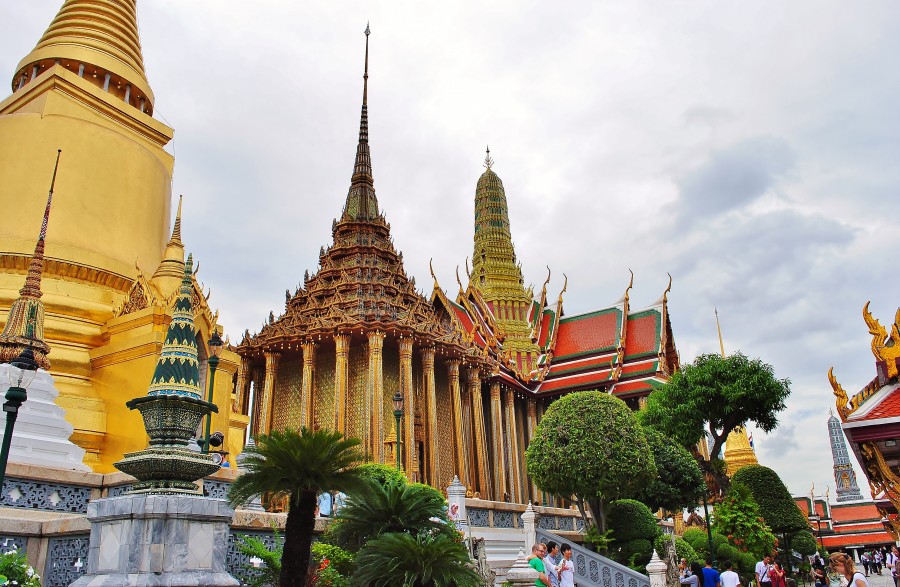
Whilst travelling around Thailand I was under impression that nobody smiles for free, and tourists are treated not as guests but as walking money and with marriages it is the same.
Education:
Thai education is well developed and the level of literacy stands at 92.5%. Education to a secondary level is free and guaranteed by the government.
Health:
In general, health care and hospitals are at a good level, and 98% of Thai people have access to clean water. The average life expectancy is 66-74 years, and death of children under 5 years is 14 per 1000. There are other diseases, but a huge issue in Thailand is HIV and AIDS, and unfortunately Thailand is a country of a higher risk. Thai government imposed a war against HIV and it does a lot to make people aware of its risk, but despite that it was calculated that 1.8% of all Thais are infected with HIV. As in all countries of developing Asia there is also a big risk of food poisoning, but in comparison to India which is the cradle of all diseases and poisonings of all kinds, in Thailand we still have nothing to worry about.

Culture/Religion:
The main religion in Thailand is Buddhism Therevada (94%), which is highly reflected in the culture of the country. In case of Thailand Buddhism is also partly a tourist attraction, which is reflected in the form of beautiful temples and statues, and monks walking in the streets. The whole world comes to Thailand to see its amazing Buddhist heritage. There are also about 4,5% of Muslims but mainly in the south, near the Malaysian border. Buddhism in Thailand is so deeply engraved in Thai culture that even Thai prostitutes explain themselves that if they are prostitutes and if they suffer in this life, they would be rewarded in the next life because of reincarnation. A research on Thailand’s prostitution was carried out and most people have said that prostitution is a part of the Thai culture and that it is good because it lowers aggression of men and helps to maintain the villages.
Thai-boxing is the national sport and a pride of Thailand and sometimes it is the only way of escaping poverty. The culture of Thailand is also linked to the kitchen which is based mainly on rice, fried vegetables and sauces. Thai cuisine has conquered the whole world but for my taste it is so spicy that sometimes I was under the impression that it is based primarily on chilies. Fortunately Thai cooks have learned that European stomachs are more delicate. Healthy desserts such as exotic fruit are also very popular. My favorite one is sticky rice with mango in coconut milk.
Other things that make up the Thai culture are national costumes, dances, Thai music, Thai massage with the scent of tiger balm and orchids attached to palm trees. Elephants are also important in Thai culture, although Thai people do not treat them well. For centuries elephants have helped in construction and logging and now they play football for tourists and carry them around in the ancient cities.
I also noticed that there is a strong cult of the king in Thailand. His posters are all over the country in exaggerated quantities and propaganda tries to convince Thai people that the king is “the expert of everything.” Attention! I do not criticize the King of Thailand. I just criticize the exaggerated propaganda machine dedicated to him. (By the way, I prefer the King of Thailand than the Queen of England. The King of Thailand defends his people and he is faithful to his Thai traditions. In England however, Muslims rape and kill English children for 20 years and the Queen Elizabeth II does not speak a word in defense of English people, and more so, she sides with Muslims).

Plaga homoseksualizmu:
As I mentioned earlier Thai culture is based on Buddhism what sends a very good message, however there is another famous custom in the country. Thailand is overwhelmed by a plague of “faggotry” and transvestites called “ladyboys”, who especially in Thailand are utterly disgusting. I have seen men dressed as women, including school boys wearing dresses and with long hair. For the purpose of feeding prostitution a lot of boys undergo sex change operations, and then pole dance and sell themselves to tourists. In this respect Thailand is terrible, and I think that this subject also relates to health. Indecent exposures of deviations associated with a loss of dignity should not be tolerated or encouraged. For the public good and for ensuring safety of people having this problem, certain things should exist only in the shadows. To much liberalism can one day turn upside down and become harmful.
I’m also reminding that homosexuality is directly connected with HIV/AIDS and Thailand is a high risk country.
Media:
Press freedom in Thailand simply does not exist. On the world press freedom index Thailand is on the 137th place.
Environmental problems:
Environment in Thailand is beautiful, but it does not mean that it is well cared for. The big problem lies in contamination of water, air pollution and illegal logging in the Thai forests, although the government controls this aspect at least to some extent. In the ’60s afforestation of Thailand was at the level of about 53%, and now it stands only at approximately 20%. Growing population and growing industry poison everything around, what has its tragic impact on nature. Another problem is the lack of fish in seas of Thailand, as their numbers have fallen by as much as 90%. Poachers for example regularly murder many species of crocodiles and large cats, and many small animals are kept as pets, what means that first they have to kill the mother of this animal. For example there are no any free-living gibbons in Thailand anymore. Crocodiles and snakes are kept on farms where they participate in violent performances, and then they are skinned and eaten, and their meat is considered a delicacy. Elephants which are closely related to Thai culture are used at work. My heart bleeds when I think that Thai lust for money doesn’t have any limits. Despite the hunting ban introduced on the endangered species, there are still bazaars in Thailand where you can buy critically endangered animals!!! One of the most threatened species is a kind of sawfish (Pristis pectinata), which is popular in many cultures. Protection is in place, but that`s Thailand where people will eat anything. In Thailand there are also crocodile and snake farms in which they are grown and killed for their meat and leather.

History of Thailand
The first people in what is now Thailand appeared about 4000 years before Jesus Christ, and in the beginning they were hunters, and then began to cultivate land. I was mainly rice. In the beginning they used tools made of rocks, and then around 3000 BC they invented bronze, and from 500 BC they used iron. The area of ??today’s Thailand was then divided into small states called Meuang. An important event was transition to Buddhism Therevada in about 100 AD. Historians believe that the ancestors of Thai people came from southern China between X and XIII centuries. However between the IX and XIII century Thailand was ruled by the Khmer Empire (today’s Cambodia). In the XIII century a few small countries merged and formed the kingdom of Sukhotai, which lost its power in the XIV century. Then, also in XIV century another kingdom arose called Ayutthaya, which took over Sukhotai and its strength grew throughout XV century. Despite its prosperity which took place in the XV century, the country struggled with many internal conflicts and wars with its neighbours, thereby weakening in the XVI century.
The first Europeans arrived to Thailand in the early XVI century. First the Portuguese in 1511, then the Dutch in 1605, the the British in 1612, and the French in 1662. As a result of it, Europeans` arrival caused so many problems that Thailand closed its borders and suspended all relations with Europe until the beginning of the XIX century.
In 1765, after fierce fighting Ayutthaya was destroyed and occupied by Burma. Thailand is the only country in Southeast Asia which was never a European colony, but it was only formally independent. To avoid colonization of Siam, King Rama V had to give up sovereignty of Laos and Cambodia to France, and Malaya to Britain. Although in the XIX century Siam became the most powerful country in South-East Asia, it abolished slavery and signed a number of beneficial treaties with European countries, it was in reality dependent on the colonial countries, and lost its sovereignty over Indochina, as I described above. This weakened Thailand again, what in 1932 resulted in coup d’etat (state overthrow), and six years later the power was taken by the military. During World War II Thailand signed a non-aggression pact, and the military and political alliance with Japan. Thailand allowed Japanese army through its territory in order to attack the British Malaya. In reality it meant that stronger Japan occupied Thailand, and 1942 Thailand declared war against Britain and the United States. As the war was going on, Thai people realized that they signed the treaty with the losing side, and very cleverly removed their pro-Japanese government, to not to take responsibility for their participation in the war on the side of the Axis.
In 1950, Thailand signed an economic treaty with the United States, and that`s why Thai troops were involved in the war in Vietnam and Laos, but avoided a direct confrontation, and America was pumping billions of dollars into Thai economy and education. On the other hand, since the end of World War II until almost the end of the XX century, a wave of unrest and political instability passed through Thailand.
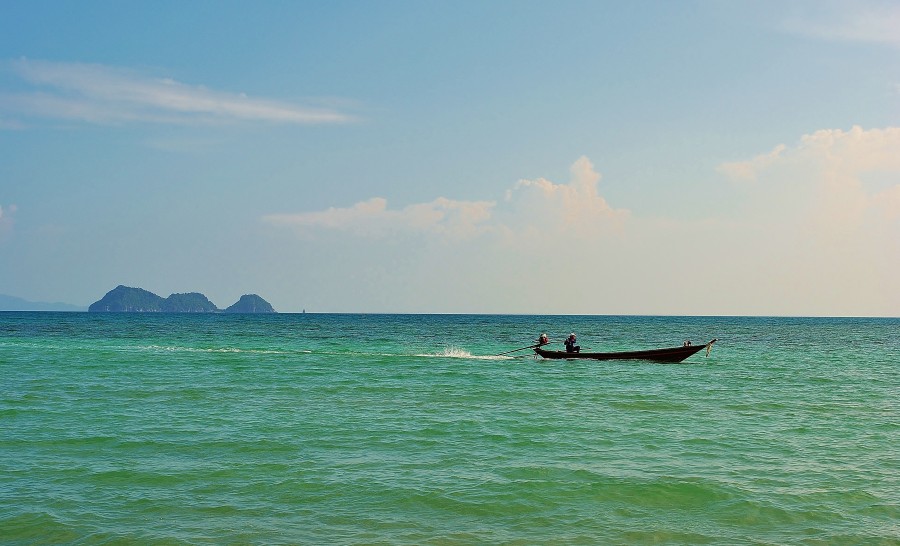
Today Thailand is a parliamentary democracy and Rama IX is the head of the state, who has reigned since 1946 and therefore is the longest serving king. The official name of the country was first amended in 1939 but was not accepted, and officially Siam became Thailand on the 11 of May 1949. The new name – “Thai” in Thai language means “free”, what means that Thailand is a country of free people.
The final words
In the XXI century Thailand still faces many problems, but certainly things have improved a lot and Thailand is growing economically. I think that Thailand has a lot to offer, it has interesting culture and art, proud traditions and nearly 70 million hard working and intelligent people. Unfortunately, Thailand’s bad reputation is primarily because of its sex industry. Apart from that Thailand is a beautiful country.
Map
Location
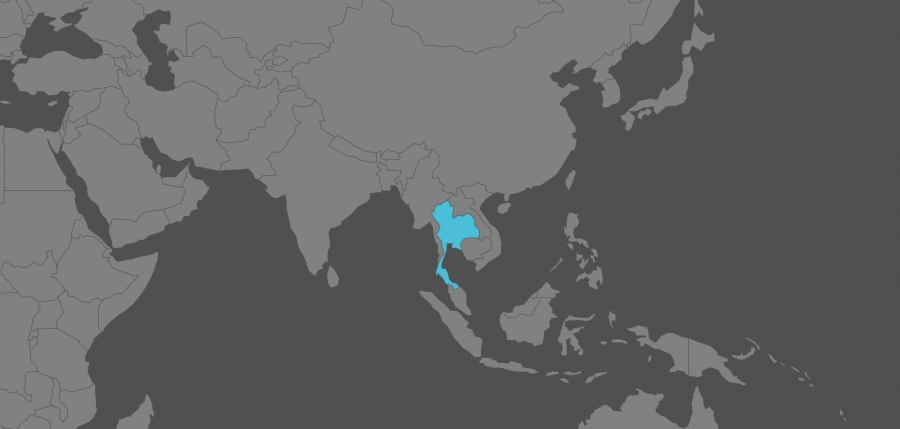
Practical information
Tourist Visa: I got my 2-month single entry tourist visa in London, and I paid GBP28. If someone wants to stay in Thailand only 1 month, a free stamp is given at all airports which entitles us to stay no longer than 30 days. Crossing by land grants a free stamp but then it allows to remain in Thailand only for 15 days. Besides, there are many other types of visas and the general rule is: “You have the money, you have the visa.” Extending tourist visa in the territory of Thailand is not worth the hassle because it is too expensive. The best way is to go to one of the neighboring countries, and get a new Thai visa on the way back. Depending on where you are I recommend Laos or Cambodia, or Burma from the north of Thailand.
Safety: The country is generally very safe. There is a petty theft and trickery as everywhere else, but just be alert.
Moving around the country: transport is very well organized, both train, bus and river transport. There is no any problem in getting around the country.
Prices: (in 2012 when £1 = 48 baht): I think that cost wise Thailand should be divided into two regions: the south (expensive) and the north (cheap), but even then it is not a general rule. The south and especially the islands are the most expensive. Accommodation there for one person costs about 200 baht, 300 baht for a couple and more expensive on Phi Phi. The basic meal is 50-60 baht. Transportation by fast boat from island to an island can be 300 baht, although a bus from Koh Tao to Krabi cost me only 450 baht. In the north, and in Bangkok I did not have to pay for boats from island to an island, that`s why it was cheaper. Besides, the meals cost between 30-40 baht and rooms for a couple about 200-250 baht. Snacks on the street are about 15-30 baht, ice cream 7-20 baht, good bagels 12-20 baht, 1h massage about 200-250. In the north and central Thailand only organized trips are more expensive because they say they are fewer tourists there, what is indeed true. A one day paradise island trip is about 400-600 baht, and in the north 900-1200 baht. It is necessary to hire a moped (150-250 baht per day plus petrol). I believe that without alcohol, cigarettes and prostitutes a couple is able to have a good time for about 1,000 baht per day. Then there are of course trips which in the south are necessary, and the entrances to the museums and temples (Wat Phra Keo and the Emerald Buddha Temple costs 350 baht, Reclining Buddha Temple 50 baht). I think that comparing to the offered beauty of Thailand it is still a cheap country.
Climate: tropical monsoon beyond the Malay Peninsula, which is located in equatorial climates. Average air temperature in Bangkok is about 30oC, while in the winter months in the mountains it`s about 22°C.



